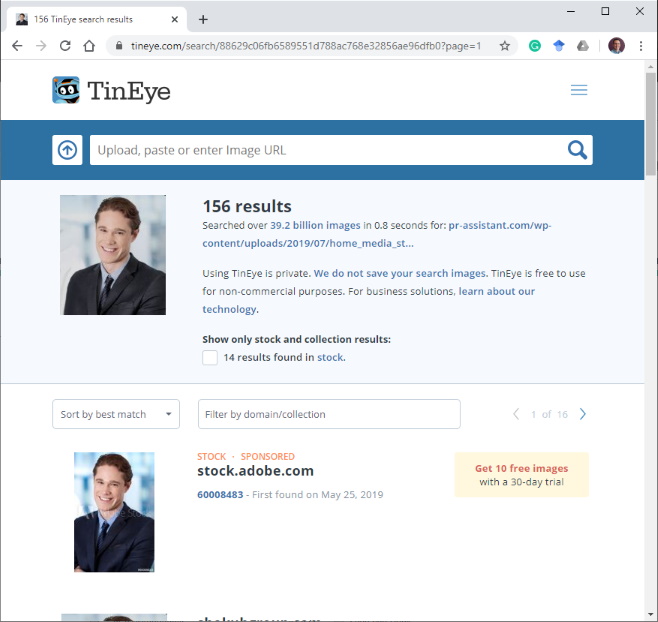Spotting Fake Content Writers
Tek Eye is not a big website, only receiving tens of thousands of page views per month. However, it only takes that amount of traffic to put it into the top 0.01% of the World's web sites. Therefore, Tek Eye often receives requests to post articles, which we are happy to do if they are legitimate. However, nearly every offer of content comes from fake content writers. What are fake content writers? They are writers who need to churn out click-bait for content mills, or direct ordinary Internet users to content on dubious websites. In this article I show an example of spotting a fake content writer, hopefully, you'll take away something that allows you to notice the difference between what is fake on the Internet and what is real. Some website owners don't take enough care and accept dubious articles that only contribute to the poor quality of much of the content being posted on the Internet. Look carefully and the fake content writers can be spotted.

Examining the Offer Email
To contact Tek Eye you can use the email address that is on the footer of every page. Email addresses are collected from the Internet by content mills who then send out automated requests offering articles to websites. Here is one Tek Eye recently received:
collaboration opportunity for your site
Kevin Perry <kevinperry@pr-assistant.com> 11 December 2019 at 10:20
To: Tek Eye
Hi,
My name is Kevin and i'm a Business Development Manager at PR-assistant. One
of our clients has shown interest in being featured on your http://tekeye.uk
in a guest post. We have a great team of writers and we can provide the
article, or if you prefer, you can also write it and feature our client. Can
you please send me a price quote for an article? Please keep in mind we are an
agency and require competitive pricing as we are reselling them to our clients.
I look forward to hearing from you,
Thanks, Kevin Perry – Business Development ManagerThis appears to be a reasonable request, however, experience tells me that this email is automatically generated. There are several faults with this email:
- No capitalisation on the subject line, although laziness with typing could be at fault, most people would start collaboration with a capital, C. Likewise with i'm instead of I'm in the first sentance.
- Not personally addressed to me. My name appears all over the Tek Eye website, if they wanted to engage with me it would be personal, starting Hi Dan, and not just Hi. Likewise with referencing the website. Instead of directly naming Tek Eye, they use the website address.
- Use of the non-secure website address is another sign of automation. For Tek Eye the http version of the address always redirects to the https version. If this email was being generated by a real writer they would have copied the https address from the browsers address bar.
- Finally, they have not been to the website and read the article about contributing, they would not even need to pay as I offer free posting for good articles.
The next check to perform is to search for the person sending the email.
Verifying the Email Sender
Legitimate writers would have an online presence and a professional profile offering their services. There are hundreds called Kevin Perry in the world, and thousands of Business Development Managers, which means there are a few called Kevin Perry working as Business Development Managers. However, a brief Internet search shows that there is no Kevin Perry working for a company called PR-assistant as Business Development Manager. Yet PR-assistant is showing a Kevin Perry as a Software Developer, a mismatch in your job title is not professional, and another indicator.
What else does the PR-assistant website reveal? It does reinforce the view that the email comes from a fake company.
A Fake Website
Whoever set-up the PR-assistant web site performed a poor job. It is a one-page website with no in-depth content to give confidence in the services they are pushing. It was only recently established (July 2019, checked using a whois service) which further undermines the credibility of the offer. The Our Team section raises questions. The photos are just too professional. The job titles do not suggest they would make good content writers. They just took the words Software Web Developer Engineer and jumbled them up to produce four titles for four stock photos.

How do you know the photos are fake? Use a reverse image search:

A real writer would have a credible online profile, and would even link to it in the email.
Another indicator of a fake website is the address they give for the company. Again a quick search showed that the address belongs to a different, and legitimate, company. A company not involved in any sort of public relations or Internet content work. Websites are cheap to buy and cheap to set-up. It is very easy to fake a business online.
Do Not Take Offers at Face Value
A legitimate content writer would have a credible online presence. They would link to online profiles and social media accounts in any email they send out. Whilst offers can appear reasonable on the surface, it is important to spend a little time, doing some digital, forensics work, to check that everything is correct, otherwise, you can end up perpetuating the fakery that is corrupting the Internet.
See Also
- For a full list of the articles on Tek Eye see the full site Index.
Author:Daniel S. Fowler Published:







